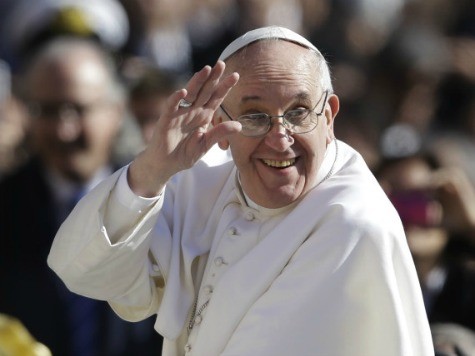As the Roman Catholic Church settles into its new era under its first pope named Francis, it seems the spirit of the pontiff’s saintly namesake may be inspiring him to break with tradition.
St. Francis of Assisi, whose association with the poor and with peace inspired the newly elected Pope Francis (formerly Argentinian Cardinal Jorge Mario Bergoglio) to take his name, not only began the practice of setting up a Nativity scene, representing the birth of Jesus in a stable in Bethlehem, but he was also the first person recorded to have developed the stigmata, wounds resembling those suffered by Christ on the cross.
Perhaps it’s fitting, then, that Pope Francis, elected during the 40-day penitential period of Lent, should be making history during Holy Week. That’s the name given to the seven days between Palm Sunday and Easter Sunday – March 31, this year – during which Catholic Masses offer Gospel readings and rituals that recall Christ’s triumphal entry into Jerusalem, the Last Supper, and Christ’s trial, crucifixion, and resurrection.
In 1955, Pope Pius XII, as part of a general liturgical reform of Holy Week, re-instituted the practice of having the presiding priest at the Holy Thursday Mass of the Lord’s Supper wash the feet of (usually) 12 members of the faithful.
This echoes Jesus’ actions at his final Passover feast, in which he removed his outer garments and washed the feet of the apostles, over Peter’s initial objections.
As related in the Gospel of John, Chapter 13, Jesus said, in part, “Do you understand what I have done to you? You call me Master and Lord, and rightly; so I am. If I, then, the Lord and Master, have washed your feet, you must wash each other’s feet. I have given you an example so that you may copy what I have done to you.”
Pope Francis, when he was archbishop of Buenos Aires, would celebrate the Holy Thursday Mass in a jail, hospital or residence for the poor or marginalized, choosing from among the people there, washing and kissing their feet.
In the past, the people that Pope Francis attended in the ritual have included drug addicts and HIV/AIDS patients, to indicate not only the idea of Christian charity – the demand that Christians love each other – but also Christ’s mercy and concern for those considered the “least” in the eyes of the world.
On Thursday, March 21, the Holy See Press Office at the Vatican in Rome announced that Pope Francis will continue this custom in his new position, celebrating the evening Holy Thursday Mass at Casal del Marmo, a penal institute for juvenile offenders in Rome.
The mid-morning Chrism Mass – which is dedicated to the priesthood and features the consecration of the Chrism, which is oil to be used throughout the year in baptisms and other rites – will be celebrated as usual at St. Peter’s Basilica, but the announcement marks a sharp change from the tradition of celebrating the evening Mass at the Basilica of St. John Lateran, the cathedral church of the Diocese of Rome.
Even though Pope Francis has emphasized his role as the Bishop of Rome, he has also emphasized the simplicity, humility, and spirit of service associated with St. Francis of Assisi. Interestingly, Pope Innocent III, who gave permission for the Franciscan Order to be created, had a dream of St. Francis holding up St. John Lateran as it threatened to fall apart, confirming for him that Francis was on a holy mission.
While in Argentina before his elevation to the papacy, Pope Francis included some women in the foot-washing ritual, which has been controversial. While this happens in many parishes, particularly in the United States, it is at odds with the written direction for the ritual, which specifies men (though not a specific number of them).
Those that associate the rite most closely with the apostles, and therefore the priesthood – which, by Church doctrine, is all-male – prefer only men to be included.
But others see it more as a demonstration of humble service, and one of the pope’s titles is “servus servorum Dei,” or “servant of the servants of God.”
The United States Council of Catholic Bishops has addressed the inclusion of women, noting, “While this variation may differ from the rubric of the Sacramentary which mentions only men (‘viri selecti’), it may nevertheless be said that the intention to emphasize service along with charity in the celebration of the rite is an understandable way of accentuating the evangelical command of the Lord, ‘who came to serve and not be served,’ that all members of the Church must serve one another in love.”
But any permanent change to the liturgical rule must come from the Holy See itself, which is under the jurisdiction of the Holy Father. Therefore, if Pope Francis does include females in the foot-washing ritual at Casal del Marmo, it may represent an official shift in Church policy.

COMMENTS
Please let us know if you're having issues with commenting.